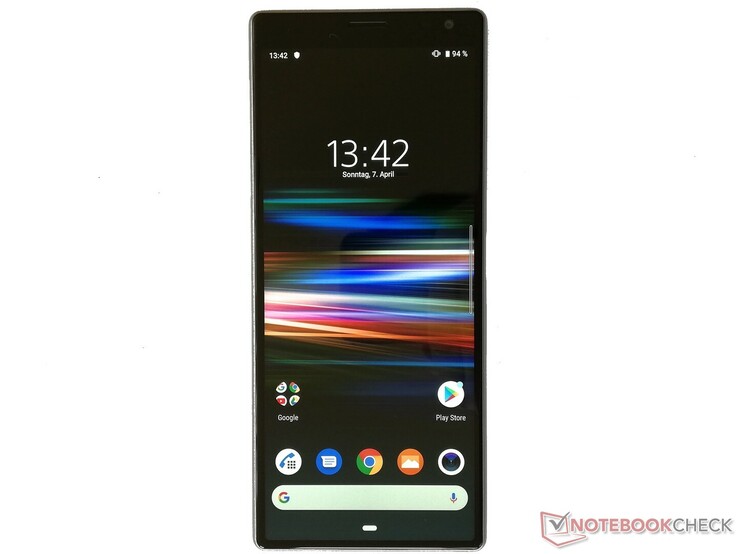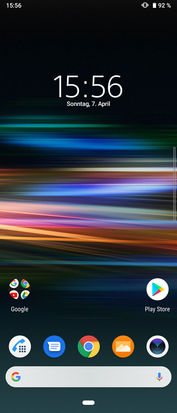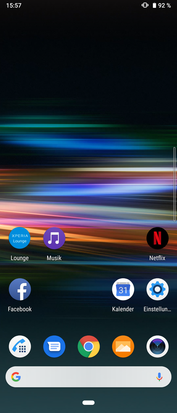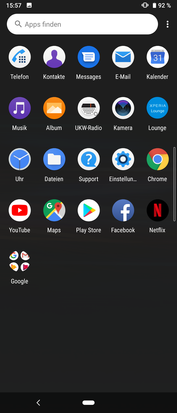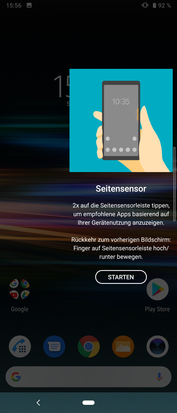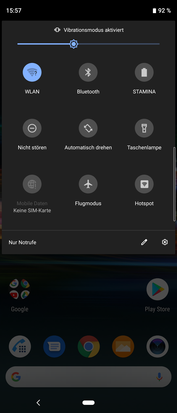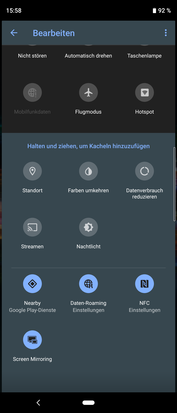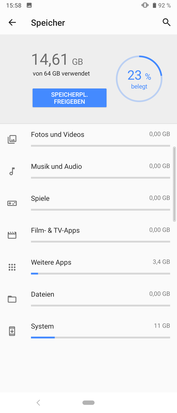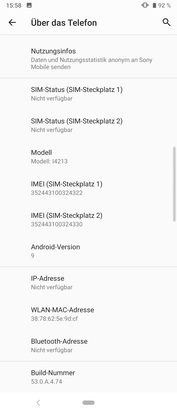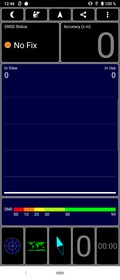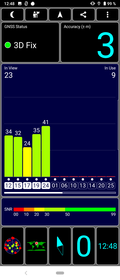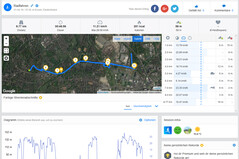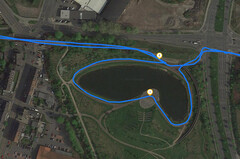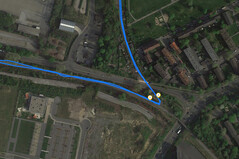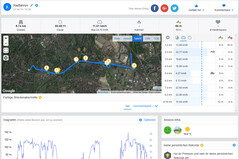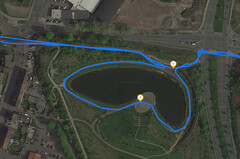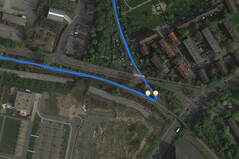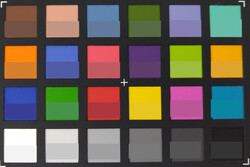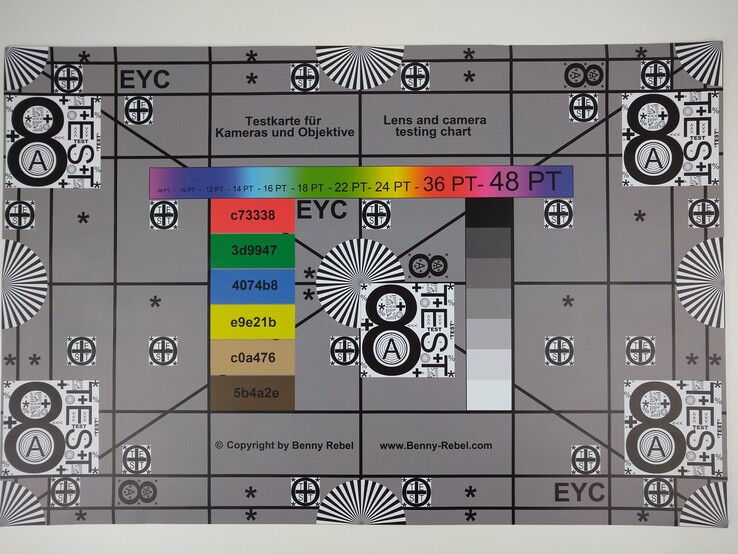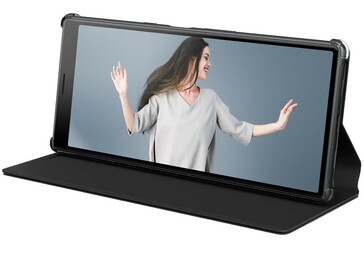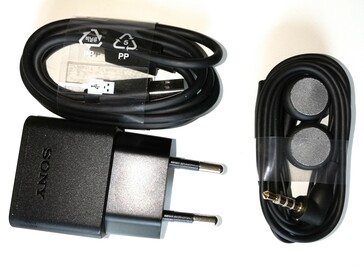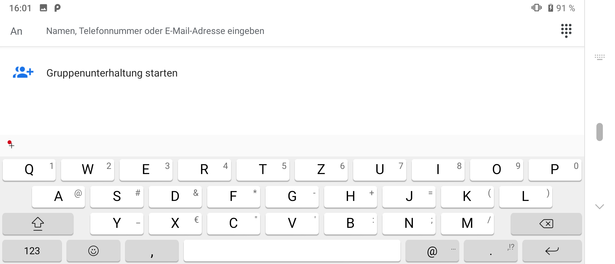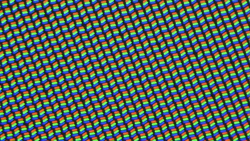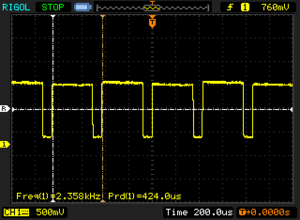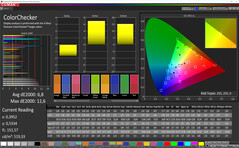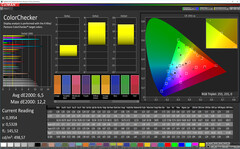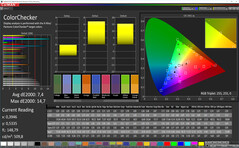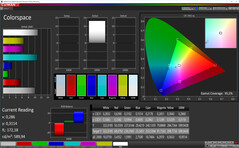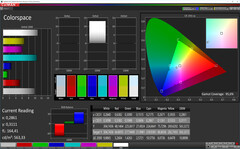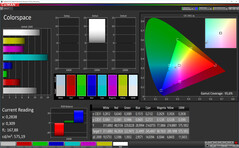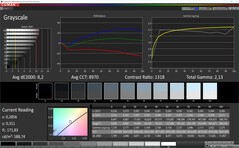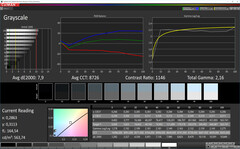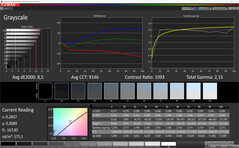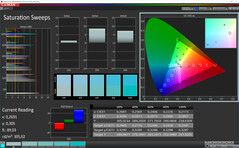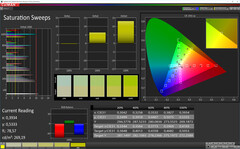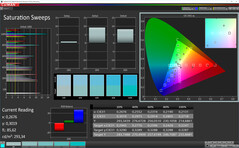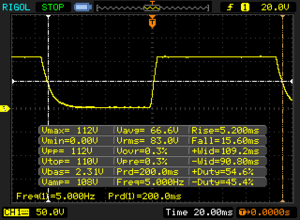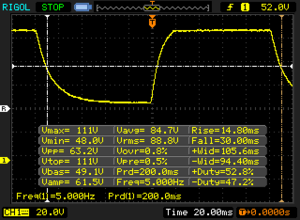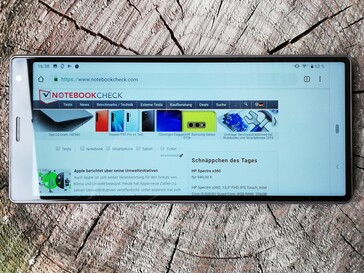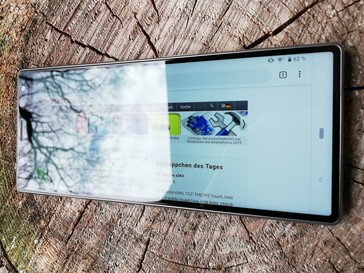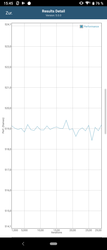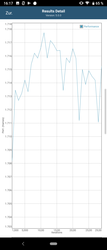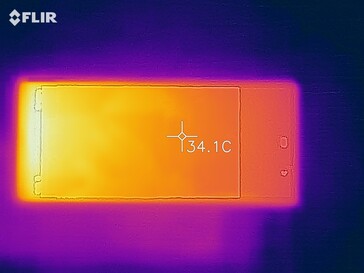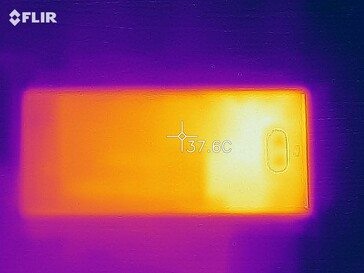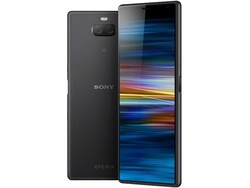Sony Xperia 10 Plus Smartphone Review
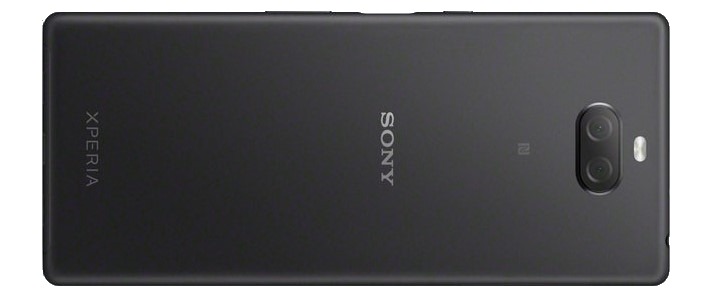
In order to design a 6.5-inch smartphone that can be used in one hand, it's almost required that it be stretched. Our first impressions are that this method functions very well and can be carried over to the future. Next to this, the Sony Xperia 10 Plus also shows that a large screen is possible without a notch, and that the design doesn't have to suffer due to the stretch.
In terms of hardware, the Japanese manufacturer decided on a Qualcomm Snapdragon 636 with integrated Adreno 509 GPU, 4 GB of RAM and 64 GB of internal eMMC flash storage. As a result, its performance should be on or around the level of devices at the same price point, although the Xperia 10 Plus differentiates itself significantly due to its 21:9 aspect ratio display.
There are numerous smartphones on the market in this price bracket that the Sony Xperia 10 Plus will have to face up to. As a representative sample we have decided to pit our review unit against the Samsungs Galaxy A9, Xiaomi Pocophone F1, Motorola Moto Z3 Play, Nokia 8.1 and Asus ZenFone 5 (2018).
Case - Sony Smartphone in 21:9 Format
Sony has built the body of the Xperia 10 Plus out of aluminium and as a result it feels both light and strong. The buttons are on the right-hand side of the device and are easy to reach. The volume rocker is, in our opinion, somewhat too light in terms of feedback and it's not easy to tell when it has been pressed. On the right-hand side there is also a cover, which is removable without tools, behind which are the slots for both nano-SIM cards and microSD card. All in all the finish and construction are of very good quality, and the materials give a high-end impression. The matte colours navy, black, silver and gold in which the phone is available also show that Sony's intention was to deliver a phone with modern design whilst holding true to its predecessor's strengths.
Coming in at a weight of 180 grams, the Xperia 10 Plus is not the heaviest phone in our comparison group; however, it weighs somewhat more than smartphones that are made of materials other than metal without actually feeling heavy. In terms of dimensions it also seems reasonable, due to the fact that despite its 6.5-inch screen it has the narrowest width.
Connectivity - Android Smartphone with Headphone Jack
In Sony's Xperia 10 Plus, smooth operation is provided by a Qualcomm Snapdragon 636 paired with 4 GB of RAM. Visuals are handled by an Adreno 509 GPU and apps as well as personal content can be stored on the included 64 GB of eMMC flash storage. The latter can also be expanded by up to 512 GB via a microSD card, which in addition does not impact the dual-SIM functionality of the phone. Both nano-SIM slots support VoLTE as well as VoWLAN where supported by the provider.
For physical data transfer, the phone is equipped with a USB Type-C port, which internally only supports the USB 2.0 standard. Lastly there is a 3.5 mm headphone jack for connecting loudspeakers or headsets to the phone.
Software - Current Android Pie
Users of the Xperia 10 Plus are greeted with a modern Android Pie installation - Version 9 - with a security patch level from February 1, 2019. Sony has decided to as far as possible avoid customising the OS and therefore both new users of Android, as well as seasoned veterans, will find a simple and easy to use interface. In order to make the larger screen somewhat easier to use, it is possible to double-tap on the left side of the display border to open a quick menu in which you can with one hand open frequently used apps.
Sony has installed the app Xperia Lounge on the 10 Plus. This offers news, information regarding discounts and sales, and tips about use of the smartphone. In addition, the Facebook and Netflix apps are preinstalled, which along with the Xperia Lounge app can only be deactivated and not uninstalled. Storing apps on an installed microSD card is also not supported.
In the settings menu you can add additional accounts, however it is not possible to add multiple users for the phone. The Sony Xperia 10 Plus supports Widevine L1, which supports streaming of content from Amazon Prime or Netflix in HD quality.
Communication & GPS - Smartphone with NFC & Bluetooth 5.0
The Sony Xperia 10 Plus is able to connect to mobile networks in the GSM, 3G and LTE networks. For the latter, bands 12/13 are supported with upload speeds of up to 150 Mb/s and download speeds of up to 600 Mb/s.
For near-field data transfer, the 10 Plus offers NFC, Bluetooth and WLAN with support for the standards 802.11a, b, g, n and ac in both 2.4 and 5 GHz bands. With our reference router, a Linksys EA8500, the WLAN test showed that the Sony is not equipped with a 2x2 MIMO antenna array. As a result, the transfer rates were somewhat lower than the competition. With a score of 317 Mb/s in receiving data, the phone is in the middle of a pack, but when transferring files it managed only 153 Mb/s, which landed it in the last spot in the test line-up.
We test with the app GPS Test how well the Xperia 10 Plus with its built-in GPS and GLONASS is able to determine its location. The results showed that in open environments it was able to measure to an accuracy of up to three meters. It was not possibly to achieve a satellite connection whilst indoors.
On our obligatory bike route we compare how well the GNSS in the Sony Xperia 10 Plus performs against our reference device, a Garmin Edge 500. The displayed route on long straight portions was generally somewhat to the side of the actual route travelled, whilst curves and sudden changes in direction were well detected and recorded, keeping up with the reference device. As a result, the Sony Xperia 10 Plus is more than suitable for general navigational use.
Phone Functions & Voice Quality - Clear Calls with the Xperia 10 Plus
The phone app of the Xperia 10 Plus offers quick viewing of previous calls and also features a simple pop-in numpad for entering phone numbers. Two additional tabs provide access to saved favourites and contacts. In conversations, the Sony smartphone showed no problems at all and voice calls in both directions were loud and clear. Background noise was well suppressed and the overall volume was good enough for making calls in somewhat louder environments.
Those who want to be heard more clearly can take advantage of the included stereo headset. Its volume level is somewhat higher than the phone, and background noise is also more isolated from the ear.
Cameras - Dual Cameras for Quick Snaps
Sony has equipped the Xperia 10 Plus with dual 12+8 MP cameras on the rear. These offer an Exmor RS image sensor with sizes of 1/2.8" and 1/4", pixel sizes of 1.25 and 1.12 μm, width of field of 76.3 and 44.6° and f/1.75 and f/2.4 apertures. For selfie-fans there is also an 8 MP camera on the front with a size of 1/4", pixel size of 1.12 µm, width of field of 84° and aperture f/2.0. This allows for portrait pictures of average quality. Colours are somewhat washed-out and edges as well as fine details are somewhat blurry when viewed close up. The camera app itself allows for several shooting modes including an AI-supported "improvement" of skin tone, wrinkles etc. Additionally, the colour temperature and brightness can be manually adjusted.
The main camera produces usable snaps that profit greatly from good lighting conditions. Our test shots included a scene with varied brightness levels and in the less well-lit areas the image was too dark. Fine details are reproduced; however, with even low zoom levels they become very grainy. With close-up photos elements are significantly more detailed and colours more accurately reproduced. Object edges and fine structure are well captured and clearly separated from one another. Under poor lighting conditions captured objects were only dimly visible. The main image was visible, however large areas were very dark and colours were not easily distinguishable from one another.
Users can however modify settings for image reproduction in the app - modes such as bokeh, panorama and portrait are available. In terms of manual adjustments, options exist for focus, shutter speed, ISO level, white balance and brightness. HDR capture is also possible, and if desired 21:9 pictures can also be taken, which will then fill the full screen of the Xperia 10 Plus.
The video mode produced recordings of a similar quality level as our test pictures; however, the auto focus was noticeably slow focusing on objects at various distances - but the automatic object detection function did mitigate this to some degree. Whilst video capture in 21:9 is possible, this limits the options available to brightness and colour temperature. A high frame-rate or slow-motion feature is not available.
Using the ColorChecker Passport we test how well the camera of the Sony Xperia 10 Plus reproduces colours. This showed that they were generally too bright - yellow and green tones were closest to the reference image. Grey and black tones were reproduced darker than they should have been.
Under controlled lighting conditions the Sony smartphone was able to create a detailed reproduction of our test chart. Fine structure and details were clear and easily distinguishable. However, in the lower corners there was some noticeable washing-out of detail.
Accessories & Warranty - Headset Included
Included in the package with the Sony Xperia 10 Plus is a USB power adapter with matching USB Type-C cable and a stereo headset. The company also offers for sale a matching flip-case that doubles as a phone stand. Further accessories are also available from Sony such as Bluetooth headphones, replacement power adapters and car adapters.
Purchasers of the Xperia 10 Plus receive a 24-month warranty from Sony. You can read more about this in our FAQ on the subject: FAQ: Guarantees, Return policies and Warranties.
Input Devices & Operation - SwiftKey for Android
Users of the Xperia 10 Plus are presented with the keyboard app SwiftKey for input duties. This offers numerous customisation options and allows for size and layout adjustments. Due to the narrow screen of the 10 Plus, the input area in portrait mode is very small and in landscape mode it is too wide. However, the touchscreen is very responsive to input and provides for fast and accurate text input. The touchscreen is very smooth and presents no issues with longer drag-and-drop type operations. The orientation sensor rotates the screen quickly and accurately into position when the phone is rotated.
The Sony phone also features a fingerprint sensor on the right-hand side of the device, which is able to quickly unlock the phone. In our testing, it functioned correctly every time.
Display - 6.5-inch in Narrow 21:9 Format
The display of the Sony Xperia 10 Plus is a 6.5-inch IPS panel in a 21:9 aspect ratio with a resolution of 2520x1080. The average brightness is listed as 580 cd/m², and our sensor produced a measurement of 575 cd/m². Combined with a brightness uniformity of 96% this places the Xperia 10 Plus in the top area of the comparison field. At its lowest brightness setting we measured luminosity at 5.99 cd/m². At brightness levels below 15%, we noted screen-flickering with a frequency of 2358 Hz - however, due to the fact that this is very high, it's unlikely to be noticed by even by those with very sensitive eyes.
| |||||||||||||||||||||||||
Brightness Distribution: 96 %
Center on Battery: 572 cd/m²
Contrast: 1430:1 (Black: 0.4 cd/m²)
ΔE ColorChecker Calman: 4.5 | ∀{0.5-29.43 Ø4.78}
ΔE Greyscale Calman: 7.9 | ∀{0.09-98 Ø5}
95.6% sRGB (Calman 2D)
Gamma: 2.16
CCT: 8726 K
| Sony Xperia 10 Plus IPS, 2520x1080, 6.5" | Samsung Galaxy A9 2018 OLED, 2220x1080, 6.3" | Xiaomi Poco F1 IPS, 2246x1080, 6.2" | Motorola Moto Z3 Play AMOLED, 2160x1080, 6" | Nokia 8.1 IPS, 2246x1080, 6.2" | Asus ZenFone 5Z ZS620KL 2246x1080, 6.2" | |
|---|---|---|---|---|---|---|
| Screen | 30% | 11% | -6% | -2% | 4% | |
| Brightness middle (cd/m²) | 572 | 553 -3% | 489 -15% | 446 -22% | 567 -1% | 601 5% |
| Brightness (cd/m²) | 580 | 553 -5% | 486 -16% | 451 -22% | 547 -6% | 565 -3% |
| Brightness Distribution (%) | 96 | 96 0% | 93 -3% | 93 -3% | 92 -4% | 90 -6% |
| Black Level * (cd/m²) | 0.4 | 0.34 15% | 0.61 -53% | 0.6 -50% | ||
| Contrast (:1) | 1430 | 1438 1% | 930 -35% | 1002 -30% | ||
| Colorchecker dE 2000 * | 4.5 | 2.2 51% | 3.8 16% | 6.58 -46% | 4.39 2% | 3.4 24% |
| Colorchecker dE 2000 max. * | 12.2 | 5.1 58% | 7.1 42% | 11.94 2% | 7.28 40% | 6.1 50% |
| Greyscale dE 2000 * | 7.9 | 1.7 78% | 4.4 44% | 3.6 54% | 4.9 38% | 4.4 44% |
| Gamma | 2.16 102% | 2.06 107% | 2.22 99% | 2.199 100% | 2.248 98% | 2.25 98% |
| CCT | 8726 74% | 6434 101% | 7213 90% | 7116 91% | 7642 85% | 7493 87% |
* ... smaller is better
Screen Flickering / PWM (Pulse-Width Modulation)
| Screen flickering / PWM detected | 2358 Hz | ≤ 15 % brightness setting | |
The display backlight flickers at 2358 Hz (worst case, e.g., utilizing PWM) Flickering detected at a brightness setting of 15 % and below. There should be no flickering or PWM above this brightness setting. The frequency of 2358 Hz is quite high, so most users sensitive to PWM should not notice any flickering. In comparison: 53 % of all tested devices do not use PWM to dim the display. If PWM was detected, an average of 8098 (minimum: 5 - maximum: 343500) Hz was measured. | |||
Our measurements showed the Sony phone to have a very good contrast ratio of 1,430:1 and a somewhat high black level of 0.4 cd/m² - whilst when compared to the other devices in the test field this is not excessively high (OLED smartphones excluded), a value for black areas of under 0.2 cd/m² would be preferred.
Users can change colour reproduction of the Xperia 10 Plus in numerous ways. In addition to manual adjustment for white balance, there are several predefined colour modes, which can be combined with predefined white balance modes. The combination of Standard (colour) and Standard (white balance) for example results in increased blue and reduced red colour tones. With the combination of Vivid (colour) and Standard (white balance) the blue tones were somewhat reduced and a combination of Standard (colour) and Warm (white balance) increased the overall colour temperature. Manually adjusting the white balance in our testing didn't result in any real improvement in colour reproduction. As a result, we recommended users stick to the included predefined profiles.
Display Response Times
| ↔ Response Time Black to White | ||
|---|---|---|
| 20.8 ms ... rise ↗ and fall ↘ combined | ↗ 5.2 ms rise | |
| ↘ 15.6 ms fall | ||
| The screen shows good response rates in our tests, but may be too slow for competitive gamers. In comparison, all tested devices range from 0.1 (minimum) to 240 (maximum) ms. » 45 % of all devices are better. This means that the measured response time is similar to the average of all tested devices (20.2 ms). | ||
| ↔ Response Time 50% Grey to 80% Grey | ||
| 44.8 ms ... rise ↗ and fall ↘ combined | ↗ 14.8 ms rise | |
| ↘ 30 ms fall | ||
| The screen shows slow response rates in our tests and will be unsatisfactory for gamers. In comparison, all tested devices range from 0.165 (minimum) to 636 (maximum) ms. » 75 % of all devices are better. This means that the measured response time is worse than the average of all tested devices (31.6 ms). | ||
The Sony Xperia 10 Plus, despite its very high brightness level, is only suitable for outdoor use under certain conditions. In shaded areas the display is easily visible; however, with even a slight change in viewing angle the screen becomes very reflective, which reduces visibility significantly.
Performance - Midrange Sony Smartphone
Sony equipped the Xperia 10 Plus with a Qualcomm Snapdragon 636 SoC with integrated Adreno 509 GPU, 4 GB of RAM and 64 GB of eMMC flash storage. With this specification the phone is competitive with others in the same class, and the price is also reasonable.
In our benchmark tests, the Sony phone came in generally in the bottom of the field. In graphically intensive applications, it was either dead last in the pack or traded places with the Motorola Moto Z3 Play and Samsung Galaxy A9 2018.
The browser benchmark results showed a similar picture. Its scores put the Sony Xperia 10 Plus in last place compared to our selected competition. However, in daily use this would not really be noticeable. Browsing the web was fluid and sites plus media content were briskly loaded and ready for consumption.
| Jetstream 2 - 2.0 Total Score | |
| Average of class Smartphone (23.8 - 387, n=149, last 2 years) | |
| Average Qualcomm Snapdragon 636 (26 - 26.4, n=2) | |
| Sony Xperia 10 Plus (Chrome 73) | |
| Speedometer 2.0 - Result 2.0 | |
| Average of class Smartphone (15.2 - 643, n=122, last 2 years) | |
| Sony Xperia 10 Plus (Chrome 73) | |
| Average Qualcomm Snapdragon 636 (25.5 - 27.4, n=2) | |
| WebXPRT 3 - Overall | |
| Average of class Smartphone (38 - 380, n=31, last 2 years) | |
| Nokia 8.1 (Chrome 71) | |
| Samsung Galaxy A9 2018 (Chrome 70) | |
| Motorola Moto Z3 Play (Chrome 67) | |
| Average Qualcomm Snapdragon 636 (46 - 61, n=9) | |
| Sony Xperia 10 Plus (Chrome 73) | |
| Octane V2 - Total Score | |
| Average of class Smartphone (2228 - 121337, n=197, last 2 years) | |
| Asus ZenFone 5Z ZS620KL (Chrome 68, AI Boost ON) | |
| Asus ZenFone 5Z ZS620KL (Chrome 68) | |
| Xiaomi Poco F1 (Chrome 68) | |
| Nokia 8.1 (Chrome 71) | |
| Samsung Galaxy A9 2018 (Chrome 70) | |
| Average Qualcomm Snapdragon 636 (8163 - 9746, n=12) | |
| Motorola Moto Z3 Play (Chrome 67) | |
| Sony Xperia 10 Plus (Chrome 73) | |
| Mozilla Kraken 1.1 - Total | |
| Motorola Moto Z3 Play (Chrome 67) | |
| Sony Xperia 10 Plus (Chrome 73) | |
| Average Qualcomm Snapdragon 636 (4105 - 5066, n=12) | |
| Samsung Galaxy A9 2018 (Chrome 70) | |
| Nokia 8.1 (Chrome 71) | |
| Xiaomi Poco F1 (Chrome 68) | |
| Asus ZenFone 5Z ZS620KL (Chrome 68, AI Boost ON) | |
| Asus ZenFone 5Z ZS620KL (Chrome 68) | |
| Average of class Smartphone (257 - 28190, n=155, last 2 years) | |
* ... smaller is better
Users of the Xperia 10 Plus have at their disposal 64 GB of internal eMMC flash storage, from which approximately 50GB is available for own content and apps after the OS and preinstalled apps are taken into consideration. Our storage benchmarks placed the Sony phone in the middle of the comparison field.
Via the included microSD slot, the storage can be expanded by up to 512 GB. Using our reference card, a Toshiba Exceria Pro M501, the card reader achieved average results, which were comparable to the other devices.
| Sony Xperia 10 Plus | Samsung Galaxy A9 2018 | Xiaomi Poco F1 | Motorola Moto Z3 Play | Nokia 8.1 | Asus ZenFone 5Z ZS620KL | Average 64 GB eMMC Flash | Average of class Smartphone | |
|---|---|---|---|---|---|---|---|---|
| AndroBench 3-5 | 18% | 30% | 62% | -11% | 117% | 10% | 925% | |
| Sequential Read 256KB (MB/s) | 280.3 | 426.6 52% | 705 152% | 271.7 -3% | 279.3 0% | 721 157% | 277 ? -1% | 2228 ? 695% |
| Sequential Write 256KB (MB/s) | 205.2 | 194.6 -5% | 155.6 -24% | 182.5 -11% | 203.8 -1% | 193.2 -6% | 178.4 ? -13% | 1852 ? 803% |
| Random Read 4KB (MB/s) | 77.7 | 116.8 50% | 101 30% | 60.6 -22% | 69.9 -10% | 124.1 60% | 60.7 ? -22% | 296 ? 281% |
| Random Write 4KB (MB/s) | 16.77 | 19.79 18% | 17.81 6% | 84.1 401% | 7.3 -56% | 96.6 476% | 33.8 ? 102% | 339 ? 1921% |
| Sequential Read 256KB SDCard (MB/s) | 83.9 ? | 73.7 ? -12% | 85.3 ? 2% | 83.7 0% | 84.7 ? 1% | 85.9 ? 2% | 77.4 ? -8% | |
| Sequential Write 256KB SDCard (MB/s) | 58.4 ? | 59.7 ? 2% | 65.6 ? 12% | 62.7 7% | 58.3 ? 0% | 66.5 ? 14% | 58.3 ? 0% |
Games - Performance on the Xperia 10 Plus
A Qualcomm Adreno 509 handles graphical duties in Sony's Xperia 10 Plus. This integrated GPU is frequently found in midrange smartphones and is capable of playing current titles fluidly. However, in applications that have high graphical performance demands it is sometimes required to reduce graphical detail down to medium or low settings. The title Arena of Valor, used when testing with GameBench, and PUBG Mobile, ran fluidly; however, the latter did suffer from occasional frame drops. In general, the Sony phone was able to run the game but right on the FPS limit for smooth gameplay.
Input in the games functioned very well. Inputs were quickly and accurately detected and the smooth display of the screen means that fingertip fatigue doesn't set in too quickly. In Arena of Valor there was an additional bonus, as it was able to take advantage of the 21:9 screen, filling out the entire display. However, PUBG Mobile did not, meaning that there was a black border on the right-hand side and that input elements on the display were harder to reach.
PUBG Compare
Arena of Valor
Emissions - On the Go with aptX & LADC
Temperatures
On the front of the Xperia 10 Plus we measured a maximum temperature of 34.4 °C when idle and up to 40.8 °C under load, during which the phone felt somewhat warm, but it was not too warm to prevent comfortable use in the hand. The demanding GFXBench stress tests Manhattan 3.1 and ES 2.0 showed that even under long-term load the performance of the Sony device didn't throttle. As a result we can state that users of the Sony Xperia 10 Plus won't have to suffer with reduced performance due to overheating.
(±) The maximum temperature on the upper side is 40.8 °C / 105 F, compared to the average of 35.2 °C / 95 F, ranging from 21.9 to 247 °C for the class Smartphone.
(+) The bottom heats up to a maximum of 38 °C / 100 F, compared to the average of 34 °C / 93 F
(+) In idle usage, the average temperature for the upper side is 29.4 °C / 85 F, compared to the device average of 32.9 °C / 91 F.
Speakers
The speaker of the Sony Xperia 10 Plus is located on the bottom edge of the phone and has relatively good volume and sound production, with a tendency towards the high mids. The Android smartphone is therefore absolutely suitable for occasional playback of media content. At very high volume levels, high tones become almost painful to the ear. Depending on frequency of use and the content being consumed it may be necessary to source headphones or an external speaker.
For connecting external audio devices the phone features Bluetooth 5.0 and a 3.5 mm headphone jack. Plugging a device into the latter resulted in a good and snug connection with no negative impact on audio quality. High-resolution audio formats such as PCM, FLAC, ALAC and DSD are supported. Adding to this is the inclusion of Sony's DSEE-HX algorithm, which is designed to upscale normal audio files. Users of Bluetooth headsets will also be pleased to note that the device supports not only Qualcomm's aptX technology but also Sony's LDAC.
Sony Xperia 10 Plus audio analysis
(+) | speakers can play relatively loud (87.2 dB)
Bass 100 - 315 Hz
(-) | nearly no bass - on average 31.1% lower than median
(±) | linearity of bass is average (11.9% delta to prev. frequency)
Mids 400 - 2000 Hz
(±) | reduced mids - on average 5.2% lower than median
(+) | mids are linear (5% delta to prev. frequency)
Highs 2 - 16 kHz
(±) | higher highs - on average 5.9% higher than median
(+) | highs are linear (4.1% delta to prev. frequency)
Overall 100 - 16.000 Hz
(±) | linearity of overall sound is average (21.9% difference to median)
Compared to same class
» 44% of all tested devices in this class were better, 8% similar, 48% worse
» The best had a delta of 11%, average was 35%, worst was 134%
Compared to all devices tested
» 62% of all tested devices were better, 7% similar, 31% worse
» The best had a delta of 4%, average was 24%, worst was 134%
Motorola Moto Z3 Play audio analysis
(±) | speaker loudness is average but good (73.4 dB)
Bass 100 - 315 Hz
(-) | nearly no bass - on average 20% lower than median
(±) | linearity of bass is average (11.1% delta to prev. frequency)
Mids 400 - 2000 Hz
(+) | balanced mids - only 2.1% away from median
(+) | mids are linear (6% delta to prev. frequency)
Highs 2 - 16 kHz
(±) | higher highs - on average 5.3% higher than median
(±) | linearity of highs is average (8.9% delta to prev. frequency)
Overall 100 - 16.000 Hz
(±) | linearity of overall sound is average (22.1% difference to median)
Compared to same class
» 46% of all tested devices in this class were better, 7% similar, 47% worse
» The best had a delta of 11%, average was 35%, worst was 134%
Compared to all devices tested
» 63% of all tested devices were better, 6% similar, 31% worse
» The best had a delta of 4%, average was 24%, worst was 134%
Battery Life - Over 10 Hours with the Xperia 10 Plus
Power Consumption
Our measurements showed that the Xperia 10 Plus consumed a minimum of 0.68 Watts at idle and a maximum of 6.44 Watts under load. This shows the Sony phone to be more efficient than other devices using the Qualcomm Snapdragon 636, and in our test field it was also one of the most efficient.
The included power adapter outputs 7.5 Watts max and is therefore more than capable of providing the Sony Xperia 10 Plus with enough power.
| Off / Standby | |
| Idle | |
| Load |
|
Key:
min: | |
| Sony Xperia 10 Plus 3000 mAh | Samsung Galaxy A9 2018 3800 mAh | Xiaomi Poco F1 4000 mAh | Motorola Moto Z3 Play 3000 mAh | Nokia 8.1 3500 mAh | Asus ZenFone 5Z ZS620KL 3300 mAh | Average Qualcomm Snapdragon 636 | Average of class Smartphone | |
|---|---|---|---|---|---|---|---|---|
| Power Consumption | -10% | -7% | -17% | 12% | -53% | -19% | -25% | |
| Idle Minimum * (Watt) | 0.68 | 1.06 -56% | 0.65 4% | 1.3 -91% | 0.8 -18% | 0.97 -43% | 0.944 ? -39% | 0.842 ? -24% |
| Idle Average * (Watt) | 2.12 | 1.94 8% | 1.97 7% | 2 6% | 1.5 29% | 2.52 -19% | 2.22 ? -5% | 1.439 ? 32% |
| Idle Maximum * (Watt) | 2.17 | 1.98 9% | 2.01 7% | 2.7 -24% | 1.8 17% | 2.62 -21% | 2.54 ? -17% | 1.624 ? 25% |
| Load Average * (Watt) | 3.82 | 3.56 7% | 4.29 -12% | 3.7 3% | 3.2 16% | 7.41 -94% | 4.51 ? -18% | 7.03 ? -84% |
| Load Maximum * (Watt) | 6.44 | 7.49 -16% | 9.05 -41% | 5.1 21% | 5.4 16% | 12.22 -90% | 7.37 ? -14% | 11.3 ? -75% |
* ... smaller is better
Battery Runtime
In our real-world WLAN tests the Sony phone achieved a runtime result of around 10.5 hours. Taking into account the battery capacity of 3,000 mAh this is a good result, as devices with a larger battery such as the Asus ZenFone 5Z are only able to last approximately 10 minutes longer.
With the included power adapter, the Sony Xperia 10 Plus requires a little over 2 hours in order to fully charge from flat.
| Sony Xperia 10 Plus 3000 mAh | Samsung Galaxy A9 2018 3800 mAh | Xiaomi Poco F1 4000 mAh | Motorola Moto Z3 Play 3000 mAh | Nokia 8.1 3500 mAh | Asus ZenFone 5Z ZS620KL 3300 mAh | |
|---|---|---|---|---|---|---|
| Battery runtime | 28% | 38% | 0% | 29% | 2% | |
| Reader / Idle (h) | 23.3 | 29.7 27% | 34.8 49% | 20.8 -11% | 28 20% | |
| H.264 (h) | 11.7 | 16.8 44% | 15.6 33% | 10.8 -8% | 14.3 22% | |
| WiFi v1.3 (h) | 10.6 | 11.5 8% | 13.5 27% | 9.9 -7% | 12.3 16% | 10.8 2% |
| Load (h) | 2.6 | 3.4 31% | 3.7 42% | 3.3 27% | 4.1 58% |
Pros
Cons
Verdict - Good Sony Smartphone with Some Weaknesses
In our review, the Sony Xperia 10 Plus was able to master daily tasks without any issues. The camera is perfectly suitable for occasional snaps and the design is worlds removed from Sony's earlier blocky designs. It becomes apparent when in the hand that due to its 21:9 aspect ratio this 6.5-inch device is small hands-friendly. Functions to aid single-handed use also add to this. Aside from this, we liked the ability to use two nano-SIM cards as well as a microSD card simultaneously, as well as the fact that no removal tool is required.
The Sony Xperia 10 Plus impresses with its wide display and many apps are also able to make use of this extra space. The design and quality are very good - only its performance lets it down, being somewhat behind the competition.
However, some users may be put off by the unusual aspect ratio, which causes the onscreen keyboard in portrait mode to be too small and in landscape mode too wide. Whilst some apps and games adapt to this wider format, users will have to live with black borders with apps that do not support it. The hardware specification is midrange; however, its performance is somewhat towards the bottom of other competitors in this class. Nevertheless, this is a very appealing phone, which doesn't have to hide itself away due to its looks and feel.
Sony Xperia 10 Plus
- 04/15/2019 v6 (old)
Mike Wobker




